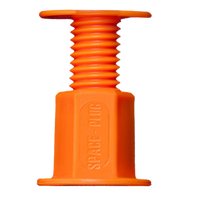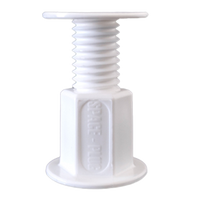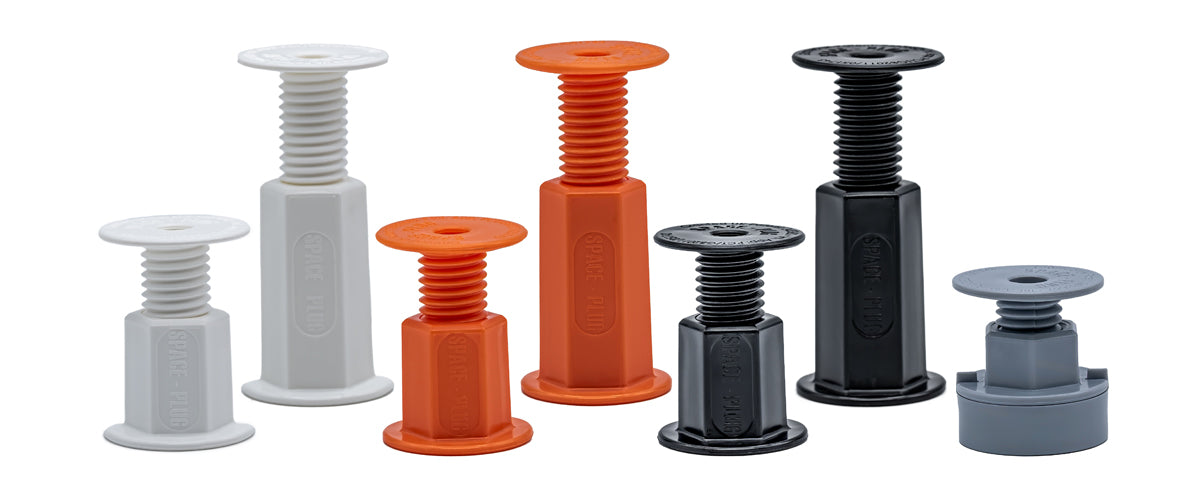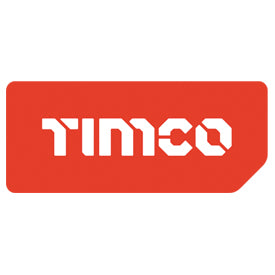Furniture Wall Anchors - What are they? Are they an overlooked hero?
Welcome everyone! Cliff Petit here! Inventor of the hugely successful Adjustable Spacer Fixing. In this article I want to discuss home safety, specifically about furniture wall anchors. This is exactly why I invented my award winning fixing! But before you decide to click away thinking this isn't relevant to you - few measures are as crucial yet often overlooked as securing furniture to the wall, a life could depend on it!
The Hidden Danger: Furniture Tip-Overs

I have seen some amazing interior design in my career and the creations often centres around the beauty and functionality of furniture pieces. From towering bookshelves to sleek entertainment centers, these items transform bedrooms, living rooms, bathrooms and kitchens. Enhancing both its style and utility. However, behind their decorative façades lies a real and potential danger, especially in busy households with children or pets and in earthquake prone regions of the world. Furniture tip-overs pose a significant risk, particularly with items like wardrobes dressers, bookshelves, any peice of furniture a child can use as a non intended climbing frame! Top heavy filing cabinets in offices are prone to tipping over too! According to the Consumer Product Safety Commission (CPSC), a child dies every two weeks in the United States from furniture or TVs tipping over, and an estimated 25,000 individuals are injured annually due to these accidents. Sadly the consequences of furniture that tips over can be devastating, making it imperative to take proactive measures to prevent such incidents.
I have spent the past two decades devoting my life to inventing a furniture wall anchor that is strong, easy to use and has one very important USP, it is adjustable, (more about that later!) to make homes safer.
It is all to easy to get caught up in the aesthetics of furniture and overlook the crucial aspect of safety. Yet, the statistics speak volumes but the deaths and injuries caused by furniture tip-overs are easily stopped. Amidst this sobering reality, one often-overlooked hero emerges: the humble furniture wall anchor.
The solution: The Furniture Wall Anchor
While the concept of a furniture wall anchor may not excite you such as a stylish sofa or a trendy coffee table will, I can't highlight enough the importance of its safety role in home. These unassuming devices act as a mini superhero, anchoring any furniture to the wall that has the potential to dangerously tip-over. The mechanics of a furniture wall anchor are simple yet differ from type to type. They also differ on ease of use and if they can be easily visible. However they all, when properly installed, significantly reduces the risk of tip-overs. Providing peace of mind for households with young children, curious pets, and although not that applicable in the UK (where I live) in earthquake-prone regions around the world!
To help you decide which is the best wall anchor for your furniture, I have written below what I hope you will agree is a comprehensive guide. As a former kitchen fitter / handyman myself, I have reviewed the most well used of furniture wall anchors, examining various types, functions, and best practices for installation. So sit back, make sure you have a handy notebook and pen to hand and lets get's started!
There are 6 main types of furniture wall anchors that you need to know about.
Click on each to learn more about them.
- Anti-Tip Straps
- L-Brackets / Angle Brackets
- Adjustable Spacer Fixings
- Furniture Straps
- Tether Kits
- Metal Anchors
1. Anti-Tip Straps

Description: Anti-tip straps consist of straps made from sturdy materials such as nylon. They will have two brackets, one anchoring to the wall, the other to the furniture. They are designed to prevent top-heavy furniture from tipping over by securing it to a stable anchor point on the wall. Depending on the size of furniture, 2 straps should be adequate, but please refer to the manufacturers instructions - every manufacturers will differ - and ensure you follow their guidance on fixing to the wall. If you are unsure or not comfortable with carrying out DIY yourself, as this is such an important fixing, ask a professional to carry out the installation.
Applications: Suitable for a wide range of furniture items, including
- Dressers
- Chests
- Bookshelves
- Entertainment centres
- Freestanding Cabinets
- Armoires
Installation: Attach one end of the strap to the furniture and the other end to a wall stud or anchor point using screws or brackets. Ensure the straps are tightened securely to provide maximum stability. If the worst happens and the furniture starts to tip the slack in the strap is taken up, until it eventually stops the furniture from tipping. It is only as strong as the fixings to the furniture and the wall, and as it allows the funiture to partially tip, anything on top of the furniture might slip off - or drawers might still open.
Pros
- Usually the straps are not visible after installation.
- Furniture can be pushed back to the wall and skirting board.
Cons
- Depending on the product, the furniture maybe able to tip, until the slack is taken out of the straps.
- If the installation allows furniture to slightly tip, drawers or objects on the furniture might fall/open.
- From personal experience of using these, they can be a little fiddly - the shorter the strap, the smaller the gap you have to install.
2. L-Brackets

Description: L-brackets, also known as angle brackets, are simple devices consisting of a metal bracket bent into an L shape, with predrilled holes, for screws to be used to fix to wall or furniture. These little 'things' are the reason I become an inventor! After installing kitchen base cabinets, L-Brackets are used to fix the kitchen cabinet to the wall, (not like like in the diagram above, kitchen manufacturers fit them in the service void, making them even harder to use correctly), they are sooo annoying, fiddly amd take up so much time! The only pro, is the swear box gets filled up quickly when using them on kitchens. They are slightly less fiddly when using them as an anti tip fixing. They can be fitted to the top or side of furniture, so you will have easy access to the screws for installation. But there is the elephant in the room - they are visible, and you have to screw into the good sides of you furniture - really not ideal. I'm sure many people believe L brackets are amazing and they do have their place, but when installing any form of furniture, there is only one place for them. IN THE BIN or melted down and turned into something more far more useful.
Applications: If you insist on using them, they can be used for
- Dressers
- Chests
- Bookshelves
- Entertainment centres
- Freestanding Cabinets
- Armoires
Installation: Place the furntiure up to the wall, position the bracket at the top or sides - mark where you need to predrill using the holes in the bracket on the wall and furniture. Drill pilot holes into furniture and create a strong wall fixing (either into a stud or using suitable wall plug/anchor). Offer up the bracket over the holes and screw into place. Depending on the size of furniture you might need 2 or more - please refer to manufacturers instructions, this is only an overview guide.
Pros
- Creates a strong fixing
Cons
- Creates a strong UGLY & VISIBLE fixing
- Drilling into the visible and good side of furniture
- Doesn't allow for obstacles in the way of furniture, such as skirting boards.
3. Adjustable Spacer Fixings

Description: The Space-Plug Adjustable Spacer Fixing (my invention) is a unique and innovative furniture wall anchor designed to simplify the installation of kitchen cabinets, furniture, and other items that need to bridge a gap, such as over a skirting boards.
Applications:
Furniture Wall Anchor:
Whether it's bookshelves, wardrobes, or entertainment centers - Space-Plug Adjustable Spacer Fixings offer a fast and very safe fix ensuring that furniture will not tip-over. Easy to install, the final result is a secure fixing without it being seen. They are ideal if you need to move furniture, you just unscrew from the inside of the furniture and re-use both the screw and adjustable spacer in a new location.
Kitchen Cabinets:
Space-Plugs are ideal for installing base kitchen cabinets, providing a reliable method for leveling and aligning base and wall cabinets to create a seamless and professional-looking installation. These provide a superior and professional alternative to ugly fiddly L-brackets.
Installation:
- Drill straight through the solid back of your furniture or kitchen cabinet.
- Thread the screw through furniture, through the middle of the Adjustable Spacer Fixing and into wall plug in a wall stuf or anchor point
- Unwind the adjustable spacer fixing to fit the gap.
- Tighten up the screw and you are done!
They can bridge different sized gaps from 15mm-80mm gaps.
Pros
- Creates a strong fixing
- Adjustable - They can increase or decrease depending on the gap between the wall and your furniture
- Easy to fit...
- Position furniture in place drill through from inside the furniture and into the wall
- Place anywhere on the crossbrace or solid back to line up with a stud in the wall.
- Doesn't damage the aesthetics of the furniture
- Not visible after installation
Cons
- Only to be used on Strong / Solid Backed Furniture - or through a cross brace
BUY FURNITURE WALL ANCHORS FROM OUR WEBSITE
4. Furniture Straps

Description: Furniture straps are very similar to anti-tip straps but may vary in design and construction. They often feature adjustable lengths and buckles for slightly easy installation and customisation. And if the furniture is not too tall and you have small hands, you can aim to get the furniture as close to the wall as possible - still a bit fiddly though - make sure the swear jar is close by!
Applications: If you insist on using them, they can be used for
- Dressers
- Chests
- Bookshelves
- Entertainment centres
- Freestanding Cabinets
- Armoires
Installation: Secure one end of the strap to the furniture and the other end to a wall stud or anchor point using screws or brackets. Adjust the strap length as needed to ensure a tight fit. In theory, make the strap tight enough the furniture isn't going to move, but they are fiddly to fit.
Pros
- Creates a strong fixing
- Fixing hidden from view
Cons
- A little fiddly to use
- Depending on how tight you manage to get the straps, the furniture might tip a bit until the slack is taken up.
5. Tether Kits

Description: Tether kits typically include a combination of straps, brackets, and hardware designed to secure furniture to the wall. They usually look way more complicated than they actually are. As you can see from the diagram you can attach the strap to the wall first, move the furniture into position and then attach the other end of the strap to the top of the furniture, removing the slack, to ensure that there is no movement! Some manufacturers include adhesive pads so as not to damage your furniture - but as always, please please refer to the manufacturers instructions on how to install their tether straps. And if you are not confident employ a professional!
Applications: If you insist on using them, they can be used for
- Dressers
- Chests
- Bookshelves
- Entertainment centres
- Freestanding Cabinets
- Armoires
Installation: Follow the manufacturer's instructions for installation, which may involve attaching straps and brackets to both the furniture and the wall using screws or adhesive pads. This makes this wall anchor easier to use, as you can position the furniture closer to the wall and then attach to the top of the furniture. Downside, you can see the strap if the furniture is a chest of drawers and is at eye level.
Pros
- Creates a strong fixing
- Position the furniture as close to the wall as possible
Cons
- Top of strap visible
- May have to drill into the top of the furniture
6. Metal Anchors

Description: Metal anchors are heavy-duty devices designed to provide secure attachment points for furniture. They are often made from materials such as steel or aluminum and come in various designs, including hooks and brackets. You usually will need acces to the back of the furniture to tighten the fixing loop. As ever please ensure you follow the manufacturers instructions and the fixings to the wall and furniture are strong!
Applications: If you insist on using them, they can be used for
- Heavy Dressers
- Heavy Chests
- Heavy Bookshelves
- Heavy Entertainment centres
- Heavy Freestanding Cabinets
- Heavy Armoires
- Refridgerators
Installation: Attach the metal anchor to the furniture using screws or bolts, then secure it to a wall stud or anchor point using additional hardware. Ensure the anchor is installed securely to withstand the weight of the furniture.
Pros
- Creates a strong fixing
- Usually not visible after installation
Cons
- Restricted access for installation
- Multiple compenents
Conclusion
So there you go! Furniture wall anchors are indispensable fixings in creating a safe home environment. Not wanting to sound overly dramatic, but they protect our families from potential accidents, giving us the confidence to let your kids play freely and your furry friends to explore and play without worry. By understanding their importance, choosing the right anchors, and following best practices for installation, we can all contribute to a safer living space.
It’s time to take action!
If you haven’t already, make a plan to anchor your furniture. It’s a straightforward process that brings immeasurable peace of mind. And if you know others who might not be aware of the importance of this safety measure, share my article with them. Together, we can make safety a priority in every home. Remember, furniture wall anchors are more than just fixings—they’re protectors of our loved ones and guardians of our peace of mind. They are mini 'Hero's' - Let’s embrace their power and make our homes safer for everyone!















